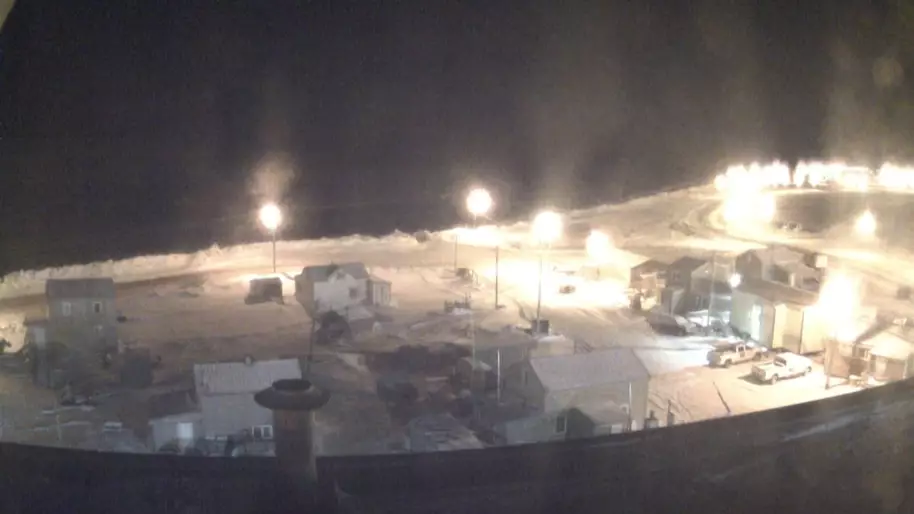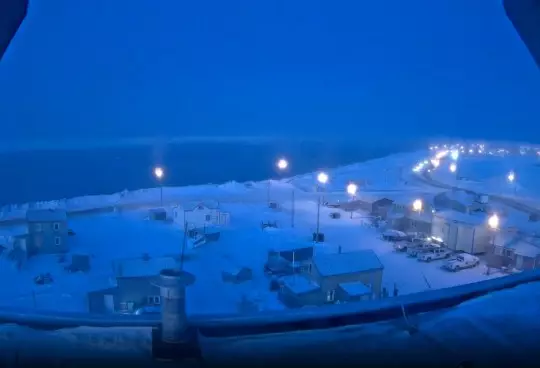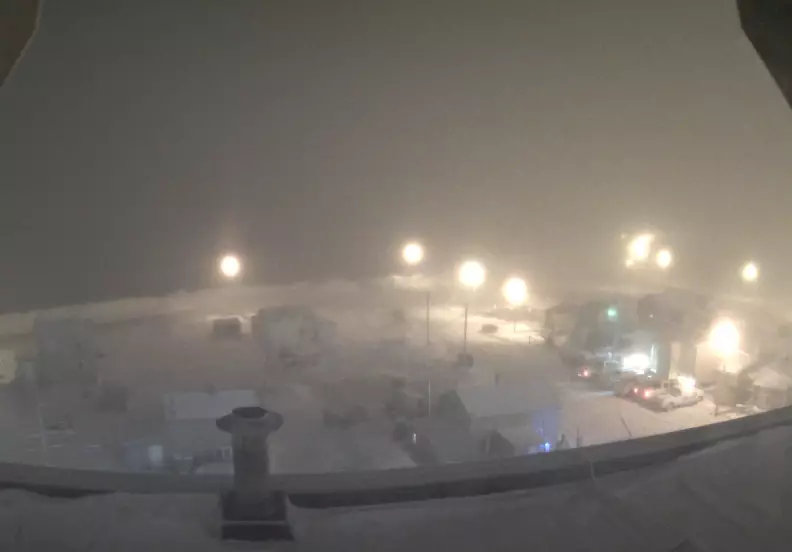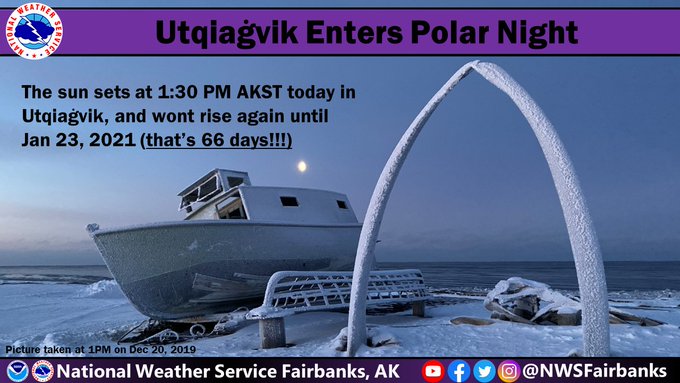
The sun has set for the final time this year in Utqiagvik, America's northernmost city, where residents have been plunged into darkness until January.
Residents of Utqiaġvik, the Alaskan city formerly known as Barrow, saw the sun set on their hometown at 1.30pm on Wednesday, and will now have to wait until 23 January 2021 for it to officially rise again.
Advert
The annual phenomenon is known as 'polar night', which is when the sun remains below the horizon due to the tilt of Earth.
Because of where Utqiaġvik sits within the Arctic circle, its 4,300 locals will only get a tiny glimmer of light at dawn - also known as 'civil twilight' - but the sun itself will remain below the horizon for the next two months.
Danielle Banks of The Weather Channel explained: "They are not going to see the sun in all its glory until late January, so that is more than two months.
Advert
"There's not going to be complete darkness. There are a few hours each day with enough light to see, but the folks who live here have technically seen their last sunset until 2021."
The University of Alaska Fairbanks has created the Utqiaġvik Sea Ice Webcam, which shows the rest of the world what the city looks like during the polar night period - when temperatures often plummet to single digits.

The stream comes from a camera overlooking the 'landfast ice' (or coastal ocean during the ice-free period in summer) from the top of a the bank building in downtown Utqiaġvik.
Advert
Located at 71° 17′ 33″ N, 156° 47′ 18″, approximately 20m above sea level, the camera looks approximately Northward.

On its website, the university explains: "Apart from providing a visual impression of the sea-ice conditions off Barrow, these images establish a longer-term record of key dates in the seasonal evolution of the sea-ice cover, such as: onset of fall ice formation, formation of a stable ice cover, onset of spring melt, appearance of melt ponds, beginning of ice break-up in early summer, removal or advection of sea ice during the summer months.
The opposite phenomenon occurs in the Northern Hemisphere during the warmer seasons between May and August.
Advert
During this period, the sun doesn't set for more than two months - a scenario which, inevitably, is called 'polar day'.
Featured Image Credit: University of Alaska Fairbanks